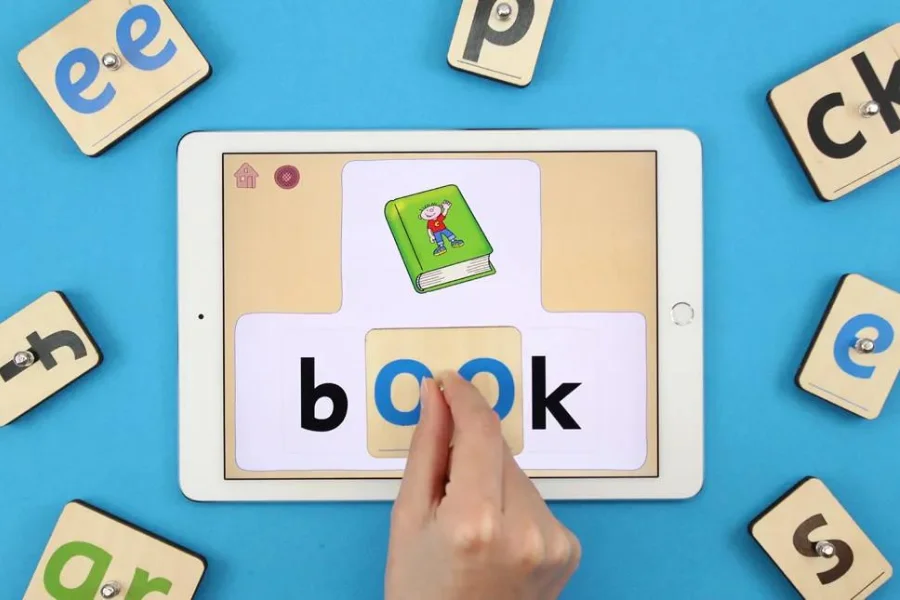Phonemes Meaning and Example
Source: landmarkschool
Phonemes Meaning and Example
Phonemes are the smallest parts of sound in a language that differentiate one word from another, and knowing Phonemes Meaning and Example can importantly increase one’s hold of language degrees. This concept is not only initial in the study of language but also important in learning how to read and write well.
Through this blog, we will explore Phonemes Meaning and Example by looking at how these tiny sounds create differences in meaning between words. We will provide Meaning and Example of Phonemes to illustrate how subtle sound variations affect communication. Whether you’re a language student or simply curious about how languages purpose, the visions into Phonemes Meaning and Example will prove precious.
Table of Content

Source: biling
Definition of Phonemes
The Definition of Phonemes says they are the smallest element of sound in a language that can make one word distinct from the other. Understanding phonemes helps in mastering reading and spelling skills. In this blog, we’ll explore the Phonemes Meaning and Example to clarify how these sounds play a vital role in communication.
To learn more about the Best Phonics Teacher Training Course, Call / WhatsApp at +919869866277 / +919869546913.
Click Here, to download the Best Phonics Teacher Training Course brochure!
Phoneme: /s/
Example: The word “sit”
The Phoneme: /s/ is evident at the beginning of “sit.” It is a hissing sound formed by running off the airflow towards the teeth. This sound can significantly alter the meaning when substituted by another phoneme. For instance, substituting /s/ with /k/ in ‘sit’ turns it into ‘kit.’
Phoneme: /a/
Example: The word “cat”
In “cat,” the Phoneme: /a/ is a short vowel sound pronounced as a broad “ah.” This sound is crucial for the word’s integrity and is distinctly different from other vowel sounds like the /o/ in “cot.” Understanding this phoneme helps in grasping how vowels influence the tone and meaning of words.
Phoneme: /t/
Example: The word “pat”
The Phoneme: /t/ at the end of “pat” is a sharp sound made by a quick release of air pressure from the mouth. This sound can significantly alter meanings; for example, changing /t/ to /n/ in ‘pat’ results in ‘pat’ becoming ‘pan.’
Phoneme: /sh/
Example: The word “shoe”
The Phoneme: /sh/ in “shoe” is produced by partly constricting the airflow and letting air pass noisily over the tongue and lips. It’s a unique sound that, if modified, changes the word dramatically—swap /sh/ for /ch/, and ‘shoe’ becomes ‘choo.’
Phoneme: /ee/
Example: The word “see”
The Phoneme: /ee/ represents a long vowel phoneme heard in “see.” It is longer and involves more vocal effort than its short vowel counterparts. Changing this phoneme can alter a word substantially; replacing /ee/ with /i/ transforms “see” into “si,” which is not a recognized English word.
This brief exploration into Meaning and Example of Phonemes demonstrates how phonemes are fundamental to the structure of words. By mastering the different sounds, learners can enhance their reading and writing skills, laying a strong foundation for effective communication.
To learn more about the Best Phonics Teacher Training Course, Call / WhatsApp at +919869866277 / +919869546913.
Click Here, to download the Best Phonics Teacher Training Course brochure!

Source: cdnparenting
Phonics Training for Teachers
Phonics Training for Teachers is a specialized program designed to improve the understanding of Phonemes Meaning and Example and improve the teaching credentials of educators in the realm of early literacy.
Vidhyanidhi Education Society, a Govt. Registered institute offers comprehensive Phonics Training for Teachers that comes with several distinctive features:
18 hours of intricate training
This rigorous Phonics Teacher Training Program spans 18 hours, ensuring that teachers acquire a deep understanding of Phonemes Meaning and Examples and their application in classroom settings.
Follows the prevalent UK-based Synthetic Phonics Learning Methodology
By adopting this internationally recognized approach, the Teacher Training in Phonics prepares educators to implement strategies that are proven to improve reading and writing fluency among young learners.
Sessions through the use of audio-visual teaching aids
These aids make the training dynamic and help in the retention of the Meaning and Example of Phonemes demonstrations, making complex concepts easier to grasp.
Learning of sounds with rhymes, stories, and actions
Engaging techniques such as jingles, stories, and actions are used to demonstrate the 42 sounds, including letter sounds and digraphs, which are crucial in phonemic awareness.
Detailed Practice of all the 42 Letter sounds & Digraphs sounds
Each session of the Phonics Training for Teachers allows for intensive practice, reinforcing the Meaning and Example of Phonemes through various interactive methods.
Mock-drills
To test the understanding and application of phonemic education, mock drills are conducted, providing a hands-on experience in a controlled environment.
Doubt-solving and Question-Answer sessions
These sessions are integral to the Phonics Training for Teachers, offering a platform for clarifying any uncertainties and ensuring that all participants can apply their knowledge of Phonemes Meaning and Examples effectively.
This Phonics Teachers Training Course offered by Vidhyanidhi Education Society (Govt. Regd.) is essential for any educator looking to specialize in early literacy, equipping them with the tools to effectively teach Phonemes Meaning and Example and other phonemic concepts and improve literacy outcomes in young learners.
Phonemes Meaning and Example
Master phonemes with Vidhyanidhi Education Society’s (Govt.Regd.) Best Phonics Teacher Training Course—join now!
To learn more about the Best Phonics Teacher Training Course, Call / WhatsApp at +919869866277 / +919869546913.
Click Here, to download the Best Phonics Teacher Training Course brochure!
FAQs
What is the Difference between a Sound and a Phoneme?
A sound is any hearing output, while a phoneme is the smallest unit of sound in speech that can modify meaning.
What are the Examples of Phonemes?
Illustrations of phonemes include the sounds /h/ in ‘hot,’, /f/ in ‘fin,’ and /m/ in ‘mat.’
What is a Phoneme Example for Kids?
For kids, a phoneme example is the /m/ sound in "mat," changing to /c/ makes "cat."





